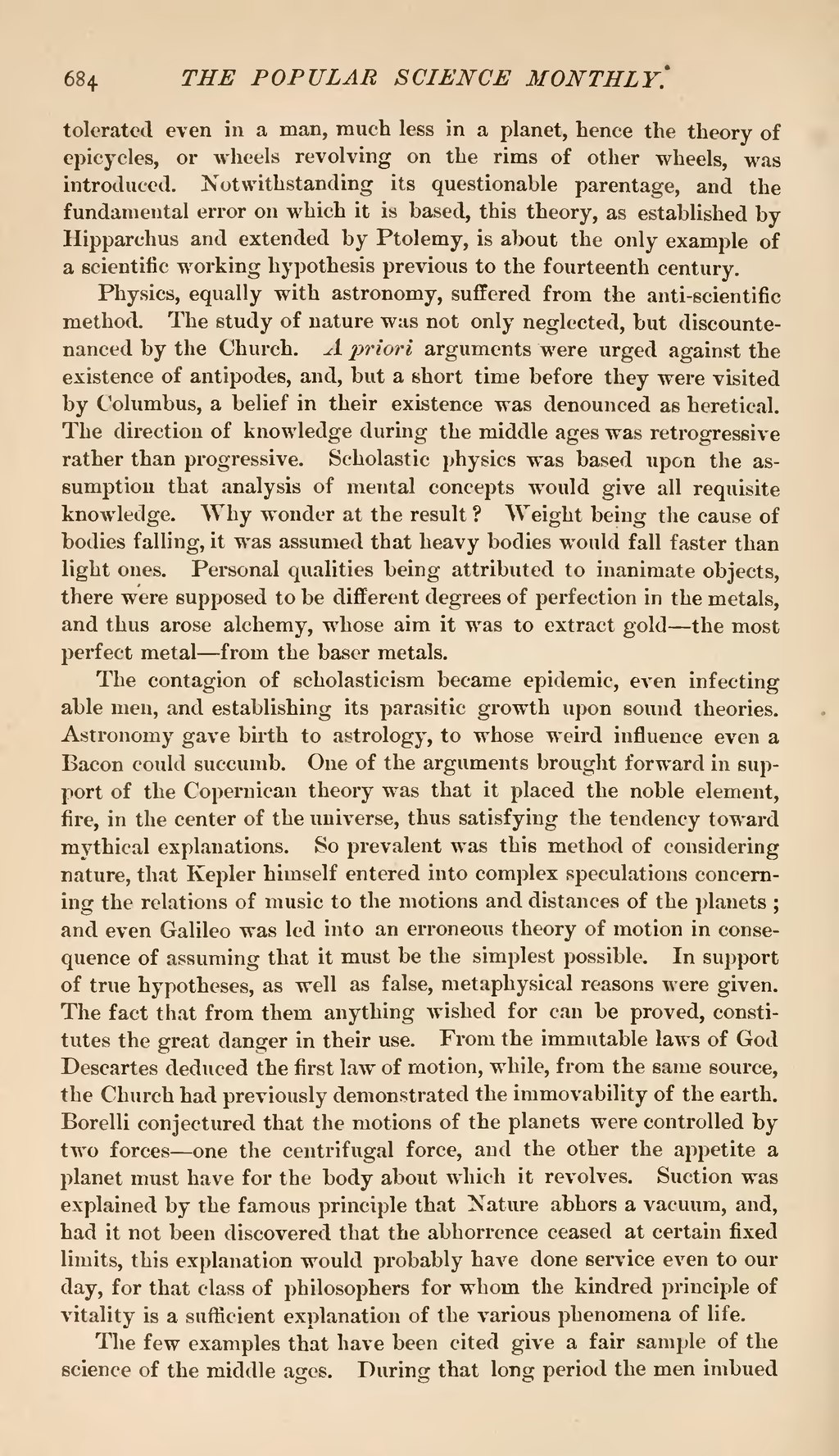tolerated even in a man, much less in a planet, hence the theory of epicycles, or wheels revolving on the rims of other wheels, was introduced. Notwithstanding its questionable parentage, and the fundamental error on which it is based, this theory, as established by Hipparchus and extended by Ptolemy, is about the only example of a scientific working hypothesis previous to the fourteenth century.
Physics, equally with astronomy, suffered from the anti-scientific method. The study of nature was not only neglected, but discountenanced by the Church. A priori arguments were urged against the existence of antipodes, and, but a short time before they were visited by Columbus, a belief in their existence was denounced as heretical. The direction of knowledge during the middle ages was retrogressive rather than progressive. Scholastic physics was based upon the assumption that analysis of mental concepts would give all requisite knowledge. Why wonder at the result? Weight being the cause of bodies falling, it was assumed that heavy bodies would fall faster than light ones. Personal qualities being attributed to inanimate objects, there were supposed to be different degrees of perfection in the metals, and thus arose alchemy, whose aim it was to extract gold—the most perfect metal—from the baser metals.
The contagion of scholasticism became epidemic, even infecting able men, and establishing its parasitic growth upon sound theories. Astronomy gave birth to astrology, to whose weird influence even a Bacon could succumb. One of the arguments brought forward in support of the Copernican theory was that it placed the noble element, fire, in the center of the universe, thus satisfying the tendency toward mythical explanations. So prevalent was this method of considering nature, that Kepler himself entered into complex speculations concerning the relations of music to the motions and distances of the planets; and even Galileo was led into an erroneous theory of motion in consequence of assuming that it must be the simplest possible. In support of true hypotheses, as well as false, metaphysical reasons were given. The fact that from them anything wished for can be proved, constitutes the great danger in their use. From the immutable laws of God Descartes deduced the first law of motion, while, from the same source, the Church had previously demonstrated the immovability of the earth. Borelli conjectured that the motions of the planets were controlled by two forces—one the centrifugal force, and the other the appetite a planet must have for the body about which it revolves. Suction was explained by the famous principle that Nature abhors a vacuum, and, had it not been discovered that the abhorrence ceased at certain fixed limits, this explanation would probably have done service even to our day, for that class of philosophers for whom the kindred principle of vitality is a sufficient explanation of the various phenomena of life.
The few examples that have been cited give a fair sample of the science of the middle ages. During that long period the men imbued

